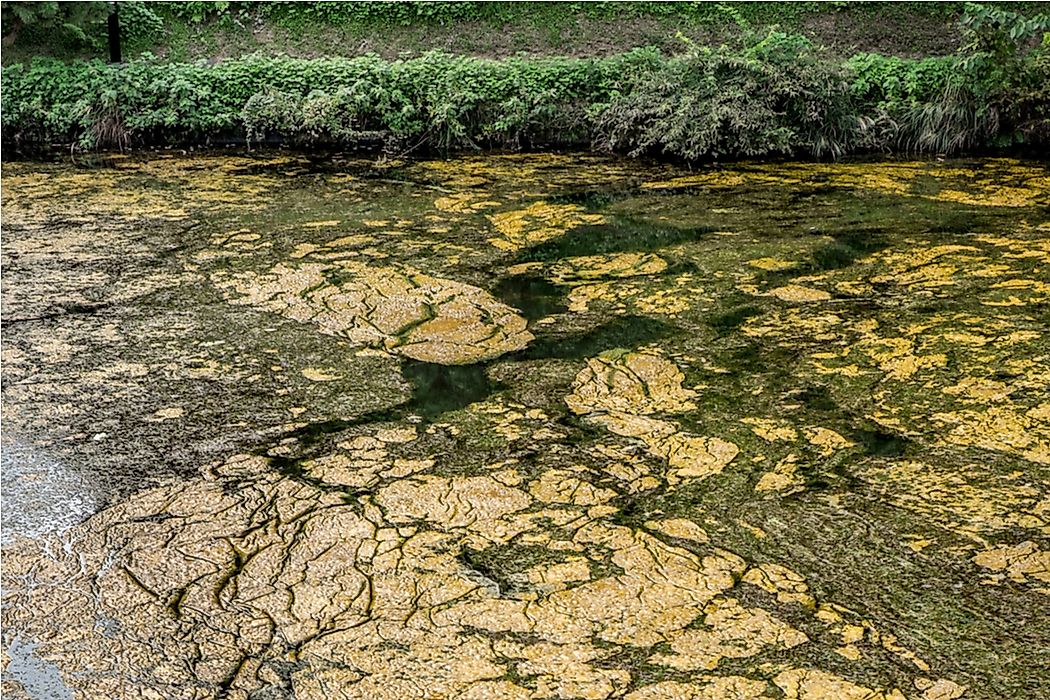What Is Biodilution?

Also known as bloom dilution, the process of biodilution refers to a decrement in the concentration or quantity of a pollutant when that particular pollutant gains a higher trophic level through consumption. Simply defined, the trophic level of an organism, or in this case pollutant, refers to the position that it occupies in the food chain. A pollutant is a foreign substance that has adverse effects on the ecosystem it is invading. For the most part, biodilution occurs when algae bloom. The blooming of algae results in an increase in its biomass, which consequently reduces the number of these pollutants in organisms occupying higher trophic levels. Some of these organisms that will experience a reduction in pollutants after the algal bloom include the likes of daphnia and zooplankton.
Bioaccumulation
The most worrisome pollutants and elements are heavy metals. These heavy metals include cadmium, lead, and mercury. Studies have shown that these particular pollutants cause something known as bioaccumulation in a food web. By definition, bioaccumulation is the process whereby detrimental elements or chemicals such as pesticides accrue within the bodies of organisms. In some cases, biomagnification may occur. The process of biomagnification occurs when the amount of toxic chemicals increases within the bodies of organisms that are tolerant to that chemical. This increase in concentration also increases for organisms that are higher up the food chain. This increase eventually reaches human beings through the creatures they consume. For example, methylmercury, the most damaging type of mercury, exists in higher quantities in aquatic animals such as fish which are, in turn, eaten by humans.
Biodilution
Studies of bioaccumulation have led to researchers discovering the importance of biodilution. A large percentage of studies conducted have almost invariably concluded that there is a relationship between biodilution and bioaccumulation. Zooplankton that live in places that have higher amounts of nutrients and productivity have been shown to contain lesser amounts of mercury compared to those that do not.
If creatures in the lower trophic levels multiply exponentially during a bloom, then the heavy metals absorbed by them will, in turn, reduce since there are more absorbers. Consequently, when these primary producers are eaten by those organisms occupying higher levels, they transfer fewer amounts of the heavy metals. This process creates a ripple effect that goes all the way to the top consumers, such as humans. The overall effect is known as biodilution.
Research Studies
More studies of biodilution have been conducted in freshwater environments. However, there is substantial data that show the process also occurs in salty environments. For example, a study conducted at the North Water Polynya showed that there is an inverse relationship between the trophic level and the concentration of heavy metals. In order to understand the danger level of heavy metals like cadmium, it is important to examine what they do to the bodies of organisms. Essentially, heavy metals are non-essential to the development of organisms. Instead, they use up calcium, a vital component of growth, thus derailing the growth of that organism.











